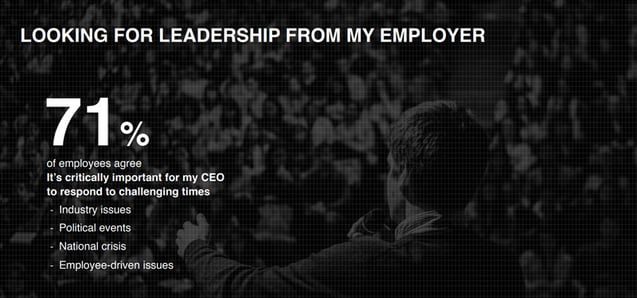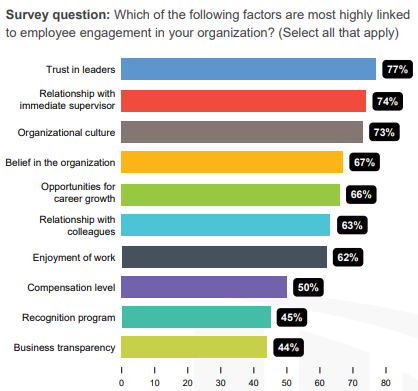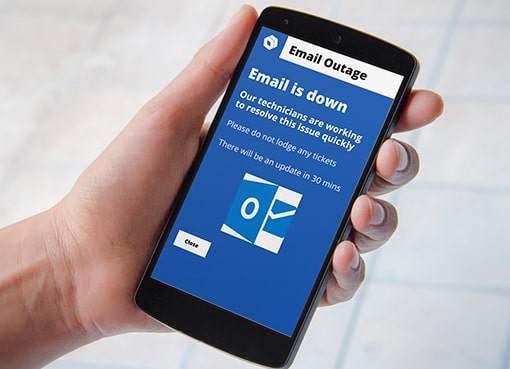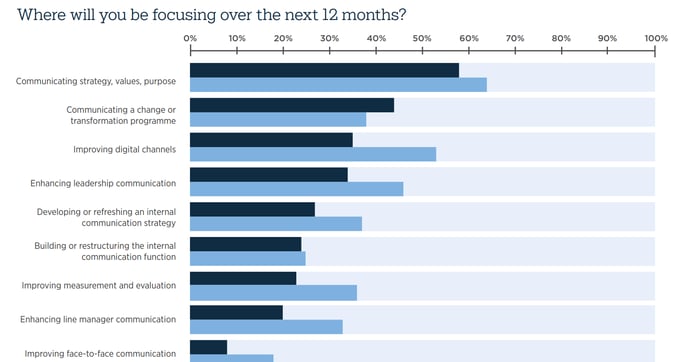
We’re working in an age of constant change. Digital transformation, dispersed workforces and declining engagement are defining our business environment. If your leadership comms don’t step up, you’re not going to keep up.
I’ve worked with businesses across the world on hundreds of internal communications campaigns, yet I’m still amazed by what I see all too often. Leaders, or their management team, dazzled by the allure of shiny new tools, distracted by the hype, misled by the promise – and neglecting something far more valuable.
Top-down communication should be the cornerstone of your internal communications strategy. It strengthens the entire organization by empowering managers and staff to overcome challenges. It keeps everyone’s eyes on the prize. And it’s never been more important than it is today. But only when done right.
How do you know if your organization needs top-down communication? It’s simple. If you employ staff, you need it. The larger the workforce, the more critical this is.
It’s Time To Cut Through The Bull
One of the biggest fallacies about top-down communication is that it only benefits the employer. That it’s a channel reserved for ‘corporate spin’ – not to support employees. It’s time to stop this outdated way of thinking.
Employees want to hear from management – and the facts prove it. With employee-driven issues, industry changes or major events constantly in the air, over 70% of employees believe it’s critically important for their leaders to respond.
 Source: 2019 Edelman Trust Barometer Global Report
Source: 2019 Edelman Trust Barometer Global Report
The lack of good leadership communication is the third biggest pain point for employees today. That’s hardly surprising when businesses are using the wrong tools to communicate with – or trusting their comms to the same tired old emails.
So let’s cut through the bull – top-down communication alleviates employee pain. Why? Because
- it provides regular credible communication so staff are better informed,
- it ensures greater transparency to build employee-employer trust,
- and it delivers clear authoritative messaging that resolves staff uncertainty.
Just ask the staff at major UK supermarket chain Tesco, where 65% of employees surveyed agreed that top-down communication increases clarity, transparency and accountability.
Top-down communication is a proven vehicle for influencing employee performance, by providing an effective, profitable channel for managers to motivate staff.
Do Your Staff Have Trust Issues?
If your employees don’t feel that your organization is transparent, they’re going to have trust issues. Lack of trust weakens the employer-employee bond. Left unresolved, this will manifest in low engagement, high turnover and crippled productivity.
As leaders, we bear most of the responsibility for building trust within our organizations. Trust in leaders is the biggest influencer on employee engagement, reported by over three-quarters of staff.
 Source: HR.com The State of Employee Engagement in 2018
Source: HR.com The State of Employee Engagement in 2018
The transparency of information that top-down communication provides is critical. Information ‘blind spots’ inhibit employee performance. While 40% of managers feel that their organization is transparent, only 22% of employees feel the same way.
Closing the information gap between managers and employees is the only reliable way to resolve this disconnect. And that’s where top-down communication comes into its own.
Don’t Get Lost In The Information Gap
Many businesses I see are struggling to close this information gap between managers and employees. It’s not about spamming staff with loads of information – it’s about delivering them the right information. Information that improves their understanding, addresses their concerns and fosters their engagement.
Emails have long been the tool du jour for communicators (and I’ve sent plenty myself in my career). But they’re just not good enough for today’s modern workplaces – they’re overused, bland and mostly ignored. Emails are ineffective.
In contrast, collaboration tools are newer and still have a bit of that ‘new car scent’. Marketing seeks to make them irresistible. But this is the trap too many fall into. Employee-to-employee messaging cannot achieve what top-down communication does. We’ll unpack why in the next post.
Top-down communications give staff assurance that messages delivered via these channels are important – that the content will actually benefit them. Messages won’t distract them, waste their time or add to info-overload.

The Cure For Workplace Performance Issues
When top-down communication is neglected or ineffectual, it results in an unproductive work environment typified by speculation and a lack of trust. An engaged workforce is more productive and ultimately achieves stronger business performance.
This relationship is illustrated by a study (by peterstark.com) on employee opinion which compared businesses in terms of overall business strength and growth. It revealed that 75% of employees in high-performing workplaces judged management communications as effective, compared to just 54% of employees in average-performing workplaces.
The message is clear – effective top-down communication benefits everyone in the organization.
How Does This Drive Your Strategic Goals?
Internal communications is the conduit where your strategic management objectives are translated into actionable employee insights. Where the actions and behaviors needed to meet your organizational roadmap are embedded.
Top-down multi-channel communication is a core means to achieve this. Consider the key priorities for internal communications professionals in 2019, as revealed in a recent global report by GateHouse. For 58% the priority is communicating the strategy, values and purpose, followed by 44% for communicating important change programs.
 Source: Gatehouse State of the Sector 2019 Report
Source: Gatehouse State of the Sector 2019 Report
Once again, don’t believe the bull. Staff want to receive this information as much as leaders need to deliver it. Nearly two-thirds of employees feel that their organizations should focus attention on communicating strategy, values and purpose.
To pursue and attain your strategic goals, your employees must be provided with the information they need, encouraged to focus on what is required and inspired by what achievement means at the finish line. Something this important can only be trusted to top-down communications.
Businesses today won’t survive and thrive without an informed and engaged workforce. Good intentions and shiny new tools won’t do it. Effective top-down communication is essential so that information flows are controlled, employees are inspired, and strategic imperatives are supported.
Our team here at SnapComms are experts in top-down communication. We work with businesses across the world just like yours. We know what it takes to get your workplace humming. So take a look at our internal communication channels and let’s talk!


